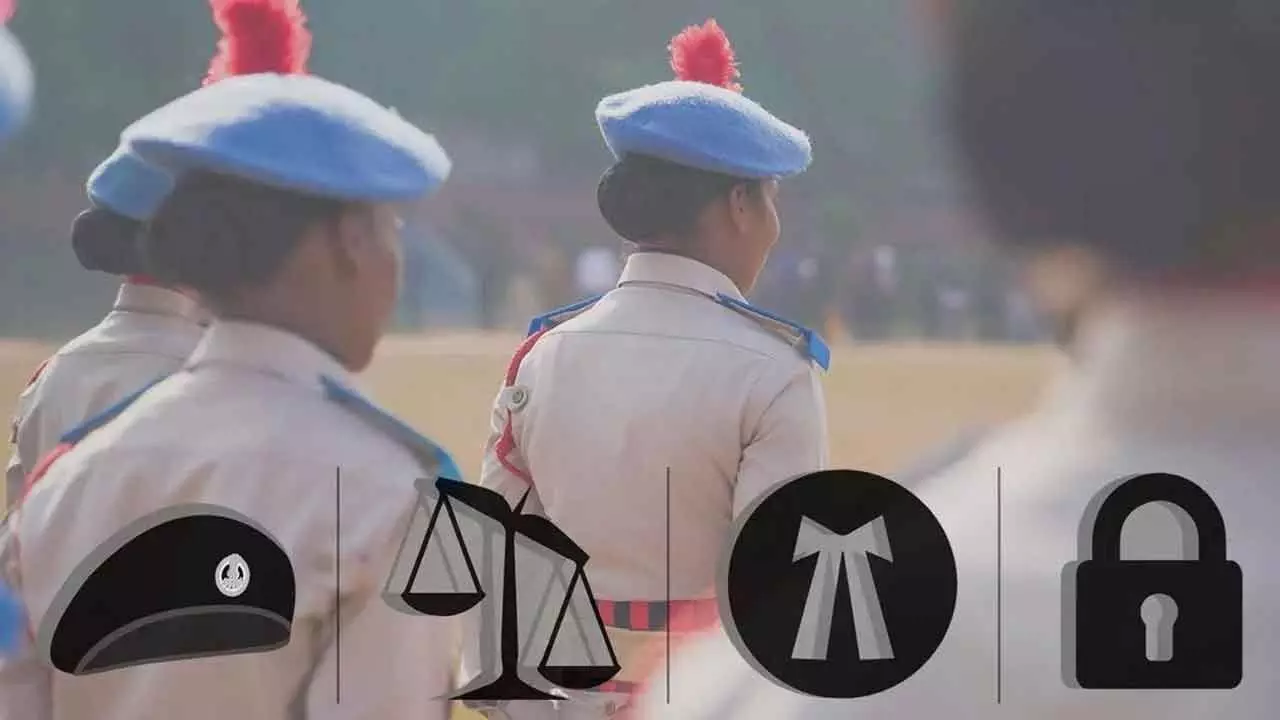Diversity Remains Elusive In India’s Justice System
While southern states were best placed in justice delivery and diversity within police, prisons, judiciary and legal aid, women are largely clustered in the lower hierarchies
Diversity Remains Elusive In India’s Justice System

More women are now in the justice system, but they remain mostly clustered around the lower levels. Further, only one state – Karnataka - has met its caste-based reservation in the police forces.
These are the findings from the fourth edition of the India Justice Report (IJR) 2025. The report derives the rankings based on the states’ performance on four pillars—police, judiciary, prisons and legal aid. IJR, in partnership with DAKSH, Commonwealth Human Rights Initiative, Common Cause, Centre for Social Justice, Vidhi Centre for Legal Policy and TISS-Prayas, uses data from the Bureau of Police Research and Development, Prison Statistics of India, Comptroller and Auditor General reports, parliament questions, National Legal Services Authority (NALSA), budget documents etc.
The five south Indian states ranked the best in justice delivery, are reported based on the report. Even in terms of diversity, these five states—Karnataka, Andhra Pradesh, Tamil Nadu, Telangana and Kerala, in that order – ranked at the top.
The diversity ranking gauged 17 indicators including the share of women and the representation of caste diversity across the four pillars of the justice system—police, judiciary, prisons and legal aid.
Overall, the representation of women in police increased from 11.7 per cent to 12.3 per cent between 2022 and 2023—the year for which latest data are available. Only 8 per cent of police officers are women, while 13 per cent of constabulary are women. Further in the Indian Police Service, only 12 per cent were women.
IndiaSpend had reported in April 2023 that multiple advisories from the Union home ministry have recommended that there be at least three women sub-inspectors and 10 women constables in each police station.
States have been advised to ensure that 33 per cent of police forces are women and the Union government has made it mandatory in the Union territories. States have their own quotas and five states/UTs—Goa, Kerala, Ladakh, Manipur, and Mizoram—had no reservations for women at all, said the report.
There are two structural factors that explain the slow rate of increase in women’s share in the police forces, explained Devyani Srivastava, Senior Manager-Research, National Law School of India University and co-author of the chapter on police. First, recruitment cycles at the constable and SI ranks (where reservation for women applies in direct recruitment) typically take up to two years to complete, from the stage of notification of vacancies--which means women’s intake happens in two years or even longer if legal challenges cause delays. Second, the reservation for women in direct recruitment is still not enforced consistently across different ranks.
Based on the IJR 2025 estimate, Andhra Pradesh and Bihar are expected to take 3.3 years to meet 33 per cent quota for women in police, but Jharkhand and Karnataka would take 175 and 115.7 years, respectively. Smaller states are worse off with Manipur estimated to take 16.8 years, the least time, while Tripura would take 222 years.
Gender diversity increased by 1 per cent at the High Courts and 3 per cent at the lower courts in the three years to 2025, said the report. As of March 2025, there are two women judges working in the Supreme Court and 110 women Judges in High Courts. There are 7,852 women Judges working in district and subordinate Courts. Only Telangana and Sikkim had at least one-third women judges on its HC benches.
“The diminishing presence of female judges as we go up the ladder signifies a leaky pipeline and the glass ceiling, both attributable to systemic barriers and gender bias that women face in a sector that has historically been male dominant,” said Valay Singh, Lead, IJR. “While most states have reservations for women in the district judiciary, no such provision exists in the high courts or the Supreme Court.”
According to March 2025 government data, since 2014, six women judges have been appointed in the Supreme Court and 162 in the High Courts. There are two women judges working in the Supreme Court and 110 women judges working in High Courts, while there are 7,852 women judges working in district and subordinate courts. Based on a 2021 projection of women’s population in India, there would be 21 women judges per million women.
Karnataka only state to fill caste quota
As in the previous year, Karnataka was the only state to fill its caste quota requirement across all caste categories–scheduled caste (SC), scheduled tribe (ST) and other backward classes (OBC)--in among police officer and constabulary.
At the officer level, only four large states met their SC quota, five met the ST quota, while nine met their OBC quota. At least eight states had better than the requisite ratio of STs in their constabulary, the report found.
No Indian state is fully compliant with 14-year-old Supreme Court directives for police reforms, IndiaSpend had reported in September 2020.
Factors such as irregular implementation of reservation policy in direct recruitment, long-running legal battles on implementing reservation in promotions at different ranks and constantly evolving administrative procedures have all impacted the pace and nature of caste representation in the police, said Srivastava.
(Courtesy: Indiaspend.org; full version of the story available on website)

